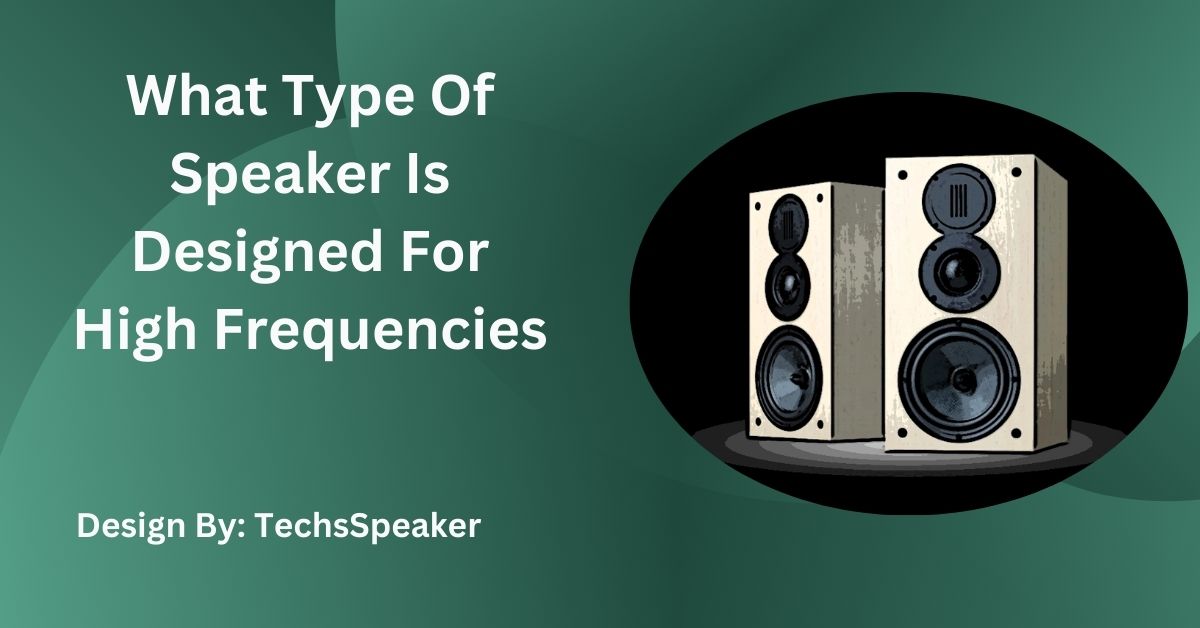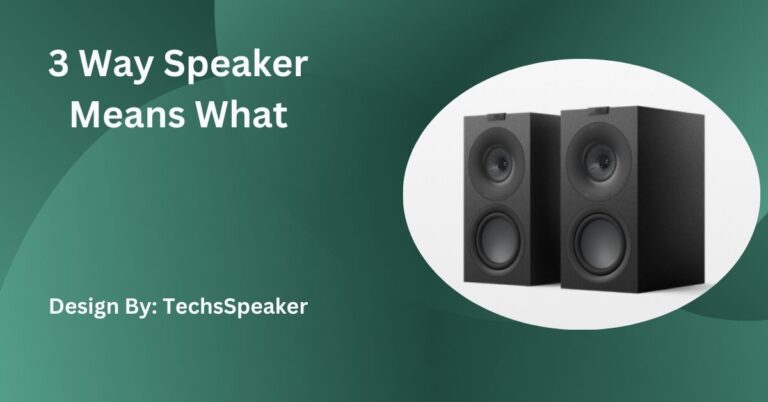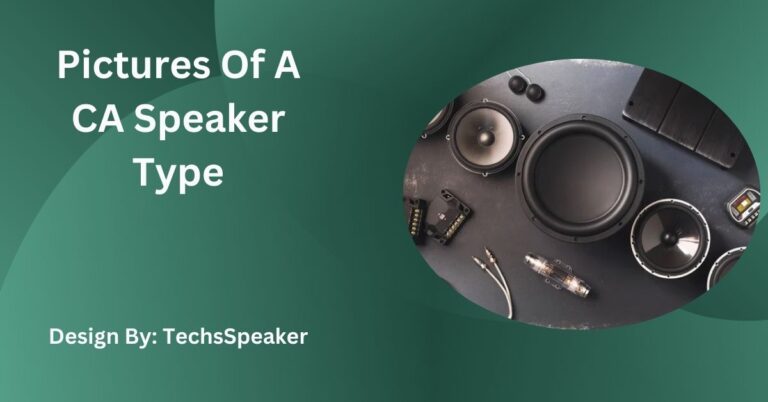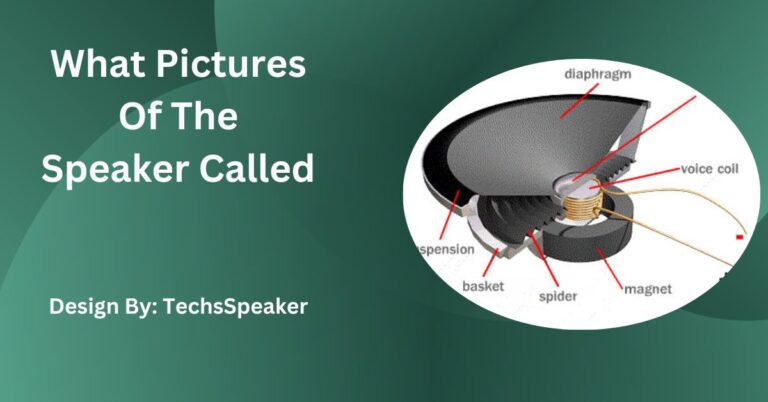What Type Of Speaker Is Designed For High Frequencies – The Ultimate Guide!
High-frequency speakers, or tweeters, produce upper-range sounds for clarity and detail. They are crucial for balanced audio in music systems, home theaters, and professional setups, enhancing overall sound quality.
Introduction About the Best Speaker:
Choosing the right speaker for high frequencies is essential for getting the best sound quality. High-frequency speakers, also known as tweeters, are specially designed to handle the upper range of sounds. This article will explain how speakers work, the different types available, and why high-frequency speakers are crucial for a great audio experience.
How Does a Speaker Work?
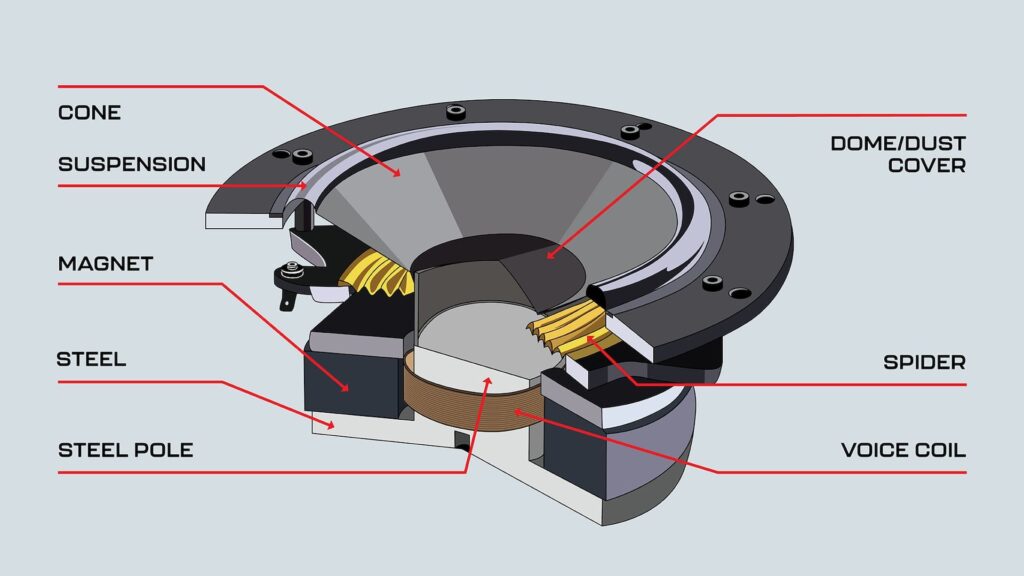
The process of turning electrical signals into sound waves powers a speaker. Here’s a brief explanation of how this procedure operates:
- Electrical Signal: The audio source sends an electrical signal to the speaker.
- Magnetic Field: A magnetic field is produced when the signal passes through a coil.
- Movement: The magnetic field causes a diaphragm or cone to move back and forth.
- Sound Waves: The movement of the diaphragm pushes air, creating sound waves that we hear.
Types of Loudspeakers:
Loudspeakers come in different designs, each optimized for specific frequencies and sound quality.
Two-Way Loudspeakers
A woofer and a tweeter are the two drivers found in two-way loudspeakers.
- Woofer: Handles low to mid frequencies.
- Tweeter: Handles high frequencies.
This separation allows each driver to work efficiently within its optimal range, providing a better overall sound.
Three-Way Loudspeakers
Three-way loudspeakers include an additional driver called a midrange.
- Woofer: For low frequencies.
- Midrange: For mid frequencies.
- Tweeter: For high frequencies.
This design allows each driver to focus on a narrower range of frequencies, resulting in higher sound quality.
Also Read: Which Of The Following Statements About Speaker Credibility Is True – A Comprehensive Guide!
What are High-Frequency Loudspeakers?
High-frequency loudspeakers, or tweeters, are designed to reproduce the upper range of the audio spectrum, typically from 2,000 Hz to 20,000 Hz. They are smaller and lighter than woofers, allowing them to move rapidly and accurately to produce high-pitched sounds.
Why are High-Frequency Loudspeakers Important?
High-frequency loudspeakers are important for several reasons:
- Clarity: They produce clear and crisp sounds, making instruments like cymbals, strings, and vocals sound more defined.
- Detail: High frequencies add detail and texture to the audio, enriching the listening experience.
- Balance: They balance the overall sound, ensuring that no frequency range overpowers the others.
When Should a High-Frequency Loudspeaker Be Used?
High-frequency loudspeakers should be used in various situations:
- Music Systems: For a balanced and detailed audio experience, especially in genres with intricate high-pitched sounds.
- Home Theaters: To enhance the clarity of dialogues and sound effects.
- Professional Audio: In studios and live performances where sound accuracy is crucial.
Types of High-Frequency Loudspeakers:
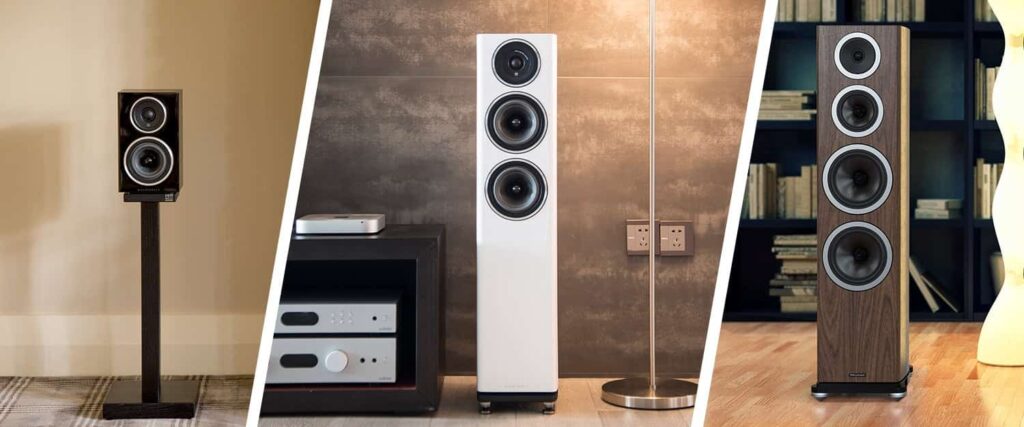
There are several types of high-frequency loudspeakers, each with unique characteristics:
Dome Tweeters
Dome tweeters are the most common type, featuring a dome-shaped diaphragm. They offer a good balance of performance, efficiency, and cost. Dome tweeters can be made from various materials, such as silk, aluminum, or titanium.
Ribbon Tweeters
Ribbon tweeters use a thin, lightweight ribbon diaphragm suspended in a magnetic field. They are known for their excellent transient response and wide dispersion, providing a detailed and natural sound.
Horn Tweeters
Horn tweeters use a horn-shaped structure to amplify the sound produced by the driver. They are highly efficient and can produce very high sound levels, making them suitable for large venues.
Electrostatic Tweeters
A tiny diaphragm is moved by an electrostatic field in electrostatic tweeters. They are known for their exceptional clarity and accuracy but can be more expensive and require specialized amplifiers.
Building and Maintaining Credibility in Your Audio Setup:
To ensure your audio system performs at its best, follow these tips:
Proper Placement
Position your speakers correctly to ensure the best sound distribution. Tweeters should be at ear level when you’re seated. Proper placement helps in:
- Optimizing Sound Quality: Ensuring high frequencies reach your ears clearly.
- Creating a Balanced Soundstage: Making sure all sound elements are well represented.
Quality Source
Use high-quality audio files or sources to fully benefit from your high-frequency speakers. This helps in:
- Maintaining Sound Integrity: Preventing loss of detail in high frequencies.
- Enhancing Listening Experience: Delivering an audio experience that is richer and more engaging.
Also Read: Speaker Phone Not Working – Troubleshooting Guide!
Regular Maintenance
To keep your speakers operating at full efficiency, keep them dust-free and clean. Dust can affect the movement of the diaphragm in tweeters. Regular maintenance includes:
- Cleaning: Wiping down speakers with a soft cloth.
- Checking Connections: Confirming the security of all connections and wires.
Matching Components
Ensure your tweeters are matched with suitable woofers and midrange drivers if you’re using a multi-way speaker system. This balance is crucial for optimal sound quality. Proper matching helps in:
- Harmonizing Sound Output: Ensuring all drivers work together smoothly.
- Preventing Frequency Gaps: Avoiding missing frequency ranges in your audio.
Room Acoustics
Pay attention to the acoustics of your room. Carpets, curtains, and furniture can absorb sound and affect the performance of your speakers. Consider adding or adjusting elements in your room to improve acoustics. Good room acoustics help in:
- Reducing Echoes: Minimizing unwanted reflections.
- Improving Clarity: Enhancing the overall sound quality.
Common Myths About High-Frequency Loudspeakers:

There are several myths about high-frequency loudspeakers that can lead to misunderstandings:
Myth 1: All Tweeters Sound the Same
Not all tweeters sound the same. The material, design, and technology used in tweeters can significantly affect their performance and sound quality.
Myth 2: Bigger is Always Better
In the case of high-frequency speakers, bigger is not always better. Tweeters need to be small and light to move quickly and accurately, producing high frequencies effectively.
Myth 3: High Frequencies are Not Important
High frequencies play a crucial role in the overall sound quality. They add detail, clarity, and definition to the audio, making it more enjoyable and realistic.
Practical Steps to Improve Your High-Frequency Audio Experience:
Here are some practical steps to ensure you get the best out of your high-frequency loudspeakers:
- Be Knowledgeable: Stay informed about your subject. Continuous learning and staying updated with the latest developments in your field can enhance your expertise and credibility.
- Practice Honesty: Always be honest with your audience. If you don’t know something, admit it. Honesty builds trust and shows integrity.
- Show Enthusiasm: Be enthusiastic about your topic. Your passion can be contagious and can engage and inspire your audience.
- Use Reliable Sources: Cite reliable sources and provide evidence to back up your claims. This shows that your information is well-researched and credible.
- Get Feedback: Ask your peers and audience for their opinions. You may retain and enhance your credibility by accepting constructive criticism.
FAQ’s:
1. What are high-frequency loudspeakers?
High-frequency loudspeakers, or tweeters, are designed to reproduce the upper range of the audio spectrum, typically from 2,000 Hz to 20,000 Hz.
2. Why are high-frequency loudspeakers important?
High-frequency loudspeakers produce clear, crisp sounds, adding detail and texture to audio. They ensure balanced sound by preventing any frequency range from overpowering others.
3. What types of high-frequency loudspeakers are there?
Types include dome tweeters, ribbon tweeters, horn tweeters, and electrostatic tweeters, each offering unique performance characteristics.
4. When should I use high-frequency loudspeakers?
Use them in music systems, home theaters, and professional audio setups to enhance clarity and detail, especially in high-pitched sounds and dialogues.
5. How do I maintain my high-frequency loudspeakers?
Regularly clean them to prevent dust buildup, ensure proper placement for optimal sound, and match them with suitable woofers and midrange drivers.
Conclusion:
High-frequency loudspeakers, or tweeters, are essential for achieving superior sound quality in any audio system. They enhance clarity, detail, and balance, making music and dialogue more enjoyable and lifelike. Proper placement, regular maintenance, and using high-quality audio sources are key to maximizing their performance. By understanding and applying these principles, you can ensure your audio system delivers an immersive and satisfying listening experience.

